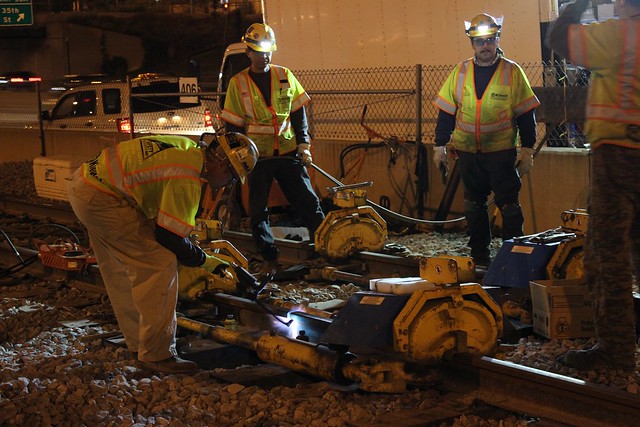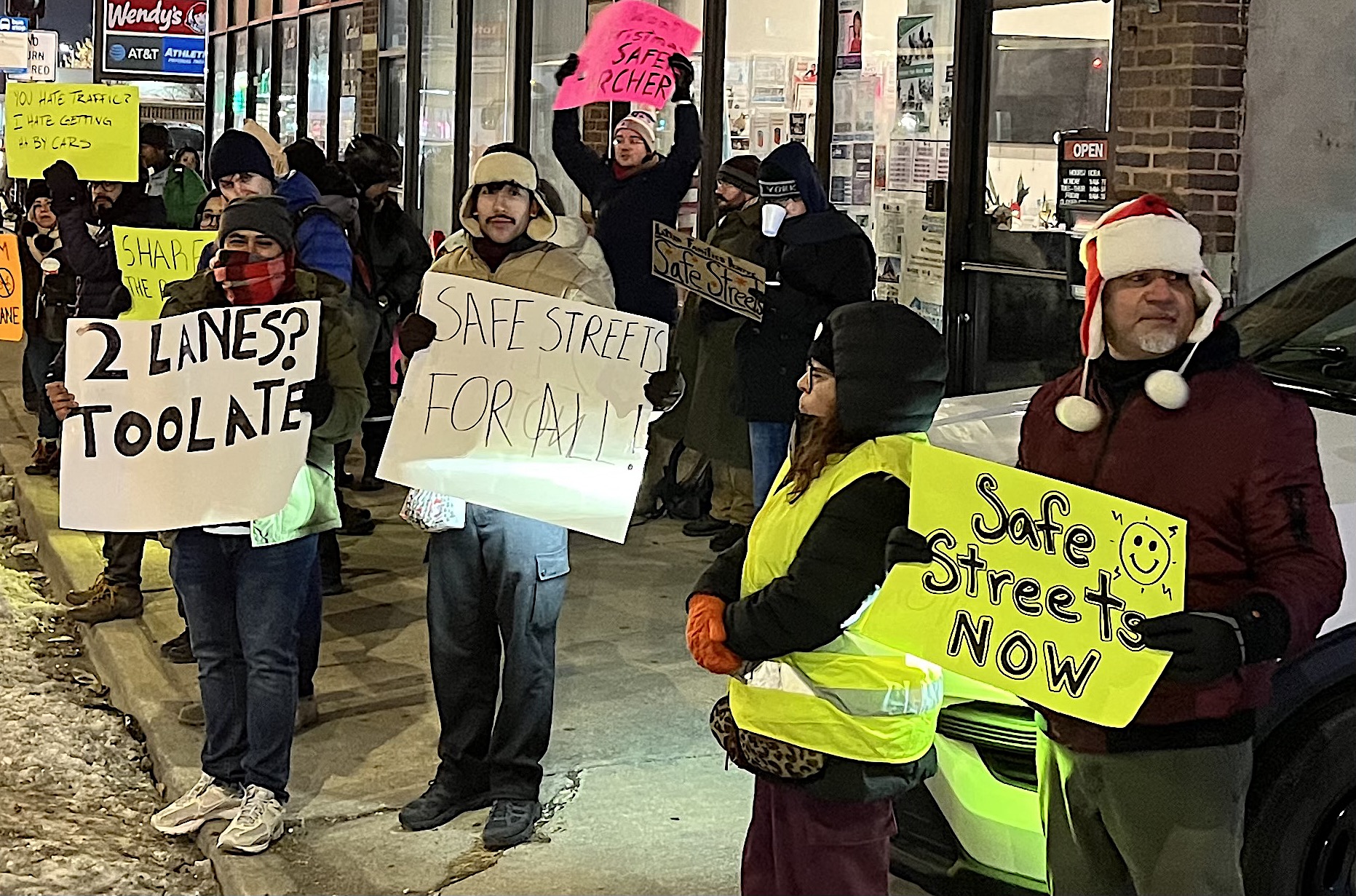
Transit systems in Northeastern Illinois face a $20 billion maintenance backlog. Now the question is how to pay for it.
Governor Pat Quinn's Northeastern Illinois transit task force has shown some of the possibilities at the region's disposal, but hasn't staked out a position on how to secure the necessary revenue to keep Chicagoland's track, trains, and buses from sliding into disrepair.
All told, the Regional Transportation Authority estimates that $20 billion is necessary to bring existing transit infrastructure into a state of good repair, with an initial five-year outlay of $4.7 billion called for in its capital plan. Expanding service will require funding in addition to meeting those maintenance needs.
The transit task force highlighted 12 funding sources used by national transit agencies and reviewed many short-term financial options "common in the private" sector. New funding sources could include fuel taxes, a broader sales tax that covers services, a payroll tax, land development charges, and parking fees. However, the task force stopped short of recommending new funding sources for the integrated transit agency it proposes.
The task force analyzed regional transit's existing funding, noting how reactive the transit agencies’ financial planning has been. “The region,” the task force writes, “lacks a strategic financial plan for transit that does more than show funding gaps based on the status quo.” The agencies don’t work together, so there’s no “coordinated planning for investments to increase or improve inter-system connectivity.” CTA, Metra, and Pace have a “natural desire” to “minimize RTA oversight” and choose priorities independently -- or not choose at all, as Metra has done since 1992 by not adopting a capital plan.
Currently, highway and transit projects are partially funded by state and federal fuel taxes, levied in cents per gallon of gas or diesel sold. However, both taxes are in decline as gas sales slip; the federal Highway Trust Fund will again run out of money this summer. A new fuel sales tax would instead tax the final purchase price, at a set percentage. The report calls it "easy and inexpensive to implement and administer,” but could push drivers to buy gas outside the area, or switch to electric vehicles.
The report specifically warns against continued reliance on federal gas tax grants, which paid for a quarter of Chicagoland's transit construction projects between 2002 and 2012. “At best,” the task force writes, “future federal funds for transit will stagnate, at worst they will decline.”
“Land development charges” could capture for transit the “increased land values resulting from the availability of high quality public transit.” TIFs, or tax increment financing districts, are one such strategy that Chicago has used to build new CTA stations like the Wilson Red Line station.
“Impact fees” are another option. These are usually charged to developers to pay for road modifications, like new traffic signals. Since both the GO TO 2040 plan and the task force prioritize developing jobs and residences near transit, perhaps a new impact fee could charge those developers who don’t build near transit.
The City of Chicago, like other municipalities, already charges taxes on paid parking lots, but doesn't dedicate the revenues to transit. A parking levy would be a special property tax on workplace or retail parking spaces. This program could be especially effective at reducing driving, and could build a constituency for convincing municipalities to reduce or eliminate costly developer parking requirements.
The report also recommends the continued enforcement of existing sales tax collection laws, whereby RTA sues companies and municipalities that skirt the sales taxes that currently fund regional transit.
The task force calls attention to one funding strategy that appears unsustainable: "toll credits." These are points that RTA or Illinois earns towards reducing the upfront, 20 percent local match needed to receive federal grants that cover 80 percent of the project cost. When Illinois Tollway collects more tolls, Illinois earns more toll credits, which RTA and other agencies can redeem to speed up project approval and their federal reimbursement checks. The transit agencies are still on the hook to to find the 20 percent in local funds -- or else risk stalling construction. Toll credits can “buy the locals time to scrape the match together while they get the project started at present construction costs," says Metropolitan Planning Council vice president Peter Skosey.
In the report, the task force recommends dropping the existing but arbitrary formulas that divide RTA's sales taxes between CTA, Metra, and Pace, and instead use performance-based distribution. These formulas were set up back in 1974 to return revenues to individual counties, “but by nature, transit crosses jurisdictions, modes, and service boards,” and the formulas haven't responded to “changes in ridership, population, or investment needs.”
Today's unreliable funding sources -- like the sales tax, which rises and falls with the economy -- also require short-term funding fixes. The task force report lists myriad short-term financial options that “would serve to reduce the magnitude of any funding shortfall” for the transit agencies. These include spending money on “investments with the greatest regional value,” a principle embedded in the regional plan but ignored by the Illinois Department of Transportation's expensive highway-expansion dreams. Another option is to “encourage competition,” allowing the private sector to compete to provide transit service and make capital investments.
A new, unified transit agency, along with better management and revised allocation formulas for existing revenues, could help to overcome public distrust that “makes it very difficult to raise new revenues.” The RTA and three service boards can use this report to start making changes now, but it’s up to legislators and the governor to enact long-term changes.




